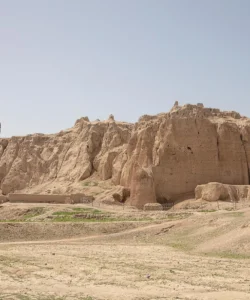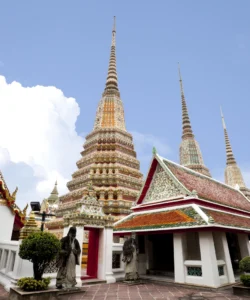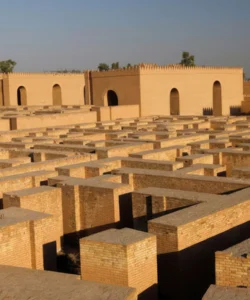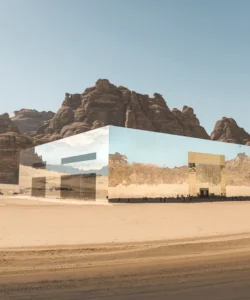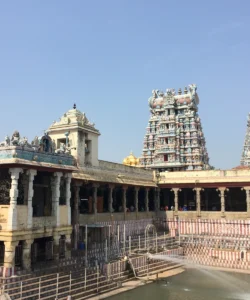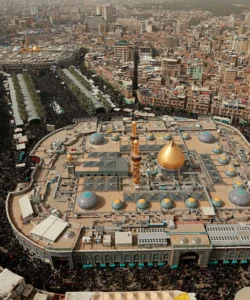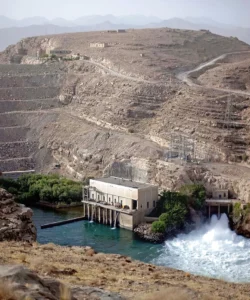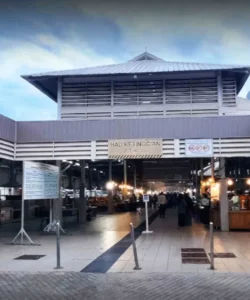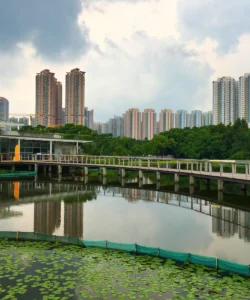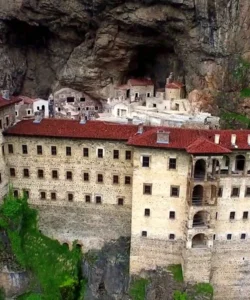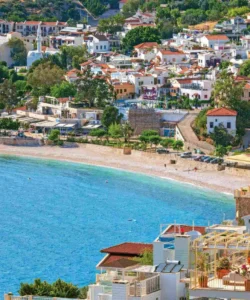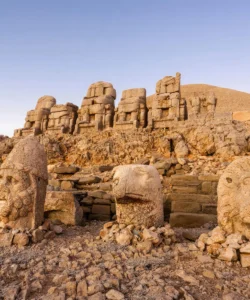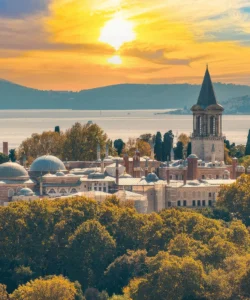Topkapi Palace, or Topkapı Sarayı, is a vast and historically significant palace complex located in Istanbul, Turkey. For nearly four centuries (from the 1460s to 1856), it served as the primary residence and administrative headquarters of the Ottoman sultans, functioning as the nerve center of one of the world’s most powerful empires. Today, it stands as a captivating museum, offering a unique glimpse into the opulent and intricate life of the Ottoman court.
Listen to an introduction about Topkapi Palace
Name and Address
- Name: Topkapi Palace (Turkish: Topkapı Sarayı)
- Address: Cankurtaran, 34122 Fatih/İstanbul, Turkey. It is situated on a promontory overlooking the Bosphorus Strait, the Golden Horn, and the Sea of Marmara.
How to Get There
Topkapi Palace is conveniently located in Istanbul’s historic Sultanahmet district, making it easily accessible by public transport and on foot from other major attractions.
- By Tram: Take the T1 tram line to Gülhane İstasyonu or Sultanahmet İstasyonu. From either stop, the palace is a short walk away (5-10 minutes).
- By Metro/Train: If coming from the Asian side of Istanbul, take the Marmaray (Atakoy–Pendik line) to Marmaray Sirkeci İstasyonu. From there, it’s about a 15-minute walk to the palace.
- By Bus: Several bus lines have stops close to the palace, including Sultanahmet and Akbıyık stops.
- On-Site: The palace complex is vast and requires considerable walking. It’s advisable to wear comfortable shoes. There are two main entrances: the Imperial Gate (Bab-ı Hümayun), the main entrance across from Hagia Sophia, and a side entrance via Gülhane Park. Purchasing tickets online in advance is recommended to avoid long queues, especially during peak season.
Landscape and Architecture
Topkapi Palace is not a single monumental building but rather a sprawling complex of interconnected courtyards, pavilions, kitchens, barracks, audience chambers, kiosks, and gardens, all enclosed by high walls. Its architecture reflects a unique blend of Ottoman, Islamic, and later European influences, emphasizing compartmentalization, inward-facing design, and a clear hierarchy of access.
- Four Main Courtyards: The palace is organized into four main courtyards, each serving a distinct purpose and becoming progressively more private:
- First Courtyard (Court of the Janissaries/Parade Court): The largest and most public area, used for ceremonies and housing service buildings like the Imperial Mint and the Byzantine Church of Hagia Irene.
- Second Courtyard (Divan Square): A park-like setting where state affairs were conducted. It houses the Imperial Council Chamber, the Outer Treasury, and the vast Palace Kitchens (which hold one of the world’s largest collections of Chinese celadon porcelain).
- Third Courtyard (Inner Palace/Enderûn Avlusu): The sultan’s private domain, guarded by white eunuchs. This courtyard contains the Audience Chamber, the Library of Ahmet III, the Dormitory of the Expeditionary Force, and the highly significant Chamber of Sacred Relics.
- Fourth Courtyard (Imperial Sofa): The innermost and most private section, featuring beautiful gardens, various pavilions (like the Baghdad Kiosk and Revan Kiosk), and offering panoramic views of the Bosphorus.
- The Harem: A labyrinthine complex within the Second Courtyard, the Harem was the private residence of the sultan’s family, including his wives, concubines, and children. It is a maze of over 300 rooms, adorned with exquisite İznik tiles and intricate decorations, offering a fascinating glimpse into court life. (Requires a separate ticket).
- Architectural Style: The palace’s design is characterized by its adaptive and additive nature, with buildings added and renovated over centuries. It features pointed arches, domes, intricate tilework, and painted wood ceilings. Unlike many European palaces, it lacks a single dominant facade, instead focusing on a series of independent structures arranged around courtyards.
What Makes It Famous
- Seat of Ottoman Power: For nearly 400 years, Topkapi Palace was the administrative and residential heart of the Ottoman Empire, witnessing the rise and fall of sultans and shaping world history.
- Imperial Collections: The palace houses an astonishing collection of Ottoman and Islamic artifacts, including invaluable porcelains, imperial robes, weapons, and particularly the Imperial Treasury with its magnificent jewels like the Spoonmaker’s Diamond and the Topkapi Dagger.
- Sacred Relics: One of its most revered sections is the Chamber of Sacred Relics, which contains items believed to belong to prophets, including the Prophet Muhammad, Moses, and John the Baptist, making it a significant pilgrimage site for Muslims.
- Harem Intrigue: The legendary Harem, with its hidden corridors and private chambers, evokes tales of royal intrigue, power struggles, and the daily lives of the sultan’s family.
- UNESCO World Heritage Site: Topkapi Palace is part of the “Historic Areas of Istanbul,” which was designated a UNESCO World Heritage Site in 1985, recognizing its immense cultural and historical value.
Differences from Some Other Wonders
- Palace Complex vs. Singular Structure: Unlike many other “wonders” that are singular, monumental structures (like the Great Pyramid, the Temple of Artemis, or the Mausoleum at Halicarnassus), Topkapi Palace is a vast, sprawling complex of interconnected buildings and courtyards. It functions more as a “city within a city” rather than a single architectural masterpiece.
- Administrative and Residential Hub: While other wonders might be tombs, temples, or defensive structures, Topkapi Palace served as both the primary residence for the ruling dynasty and the central administrative hub of a vast empire, making its functional scope much broader.
- Layered Ottoman History: Topkapi Palace encapsulates nearly four centuries of continuous Ottoman rule, showcasing a blend of architectural styles and cultural influences that evolved over time, from its early classical Ottoman design to later Baroque flourishes. This offers a different historical narrative compared to sites representing a single, shorter period.
- Emphasis on Interior Spaces and Collections: While its exterior is impressive, a significant part of Topkapi’s wonder lies within its numerous pavilions, chambers, and treasury rooms, which house unparalleled collections of artifacts, rather than solely relying on external grandeur.
Topkapi Palace Photos:
































